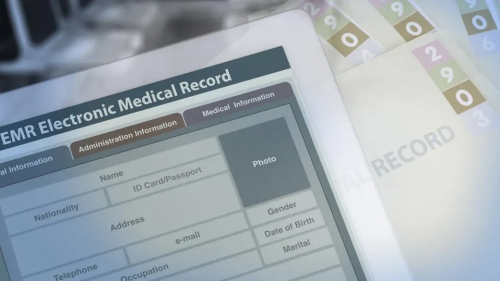 The field of ophthalmology is undergoing a significant transformation, driven by the integration of technology into clinical practices. One standout advancement is ophthalmology EMR (Electronic Medical Records) software, which plays a crucial role in reshaping how eye care professionals handle patient care, boost operational efficiency, and enhance treatment outcomes. This blog post explores the impact of technological progress, particularly ophthalmology EMR software, on the management of eye care.
The field of ophthalmology is undergoing a significant transformation, driven by the integration of technology into clinical practices. One standout advancement is ophthalmology EMR (Electronic Medical Records) software, which plays a crucial role in reshaping how eye care professionals handle patient care, boost operational efficiency, and enhance treatment outcomes. This blog post explores the impact of technological progress, particularly ophthalmology EMR software, on the management of eye care.
Revolutionizing Patient Records Management
Ophthalmology EMR software has transformed patient record management by digitizing the entire process. This advanced software enables thorough documentation of patient visits, medical history, test results, and treatment plans on a centralized digital platform. Quick access to patient data enhances decision-making and tailors patient care for better outcomes.
Enhancing Diagnostic Precision
Ophthalmology EMR software offers a crucial advantage by boosting diagnostic accuracy. By combining diagnostic tools and imaging systems, this software facilitates the effortless capture and storage of high-resolution images and diagnostic data. This seamless integration enhances the precision of diagnosing eye conditions, resulting in more effective treatment strategies.
Streamlining Workflow and Increasing Efficiency
Ophthalmology practices frequently handle a large number of patients and intricate diagnostic procedures. EMR software enhances clinical workflows by automating tasks like appointment scheduling, billing, and prescription management. This streamlining not only saves time but also minimizes errors, improving the overall efficiency of the practice.
Facilitating Telemedicine in Ophthalmology
The rise of telemedicine has greatly benefited various medical fields, such as ophthalmology. With EMR software integrating telemedicine features, eye care specialists can offer virtual consultations, enhancing access to eye care for patients, particularly those in distant locations or with limited mobility. This digital method of eye care promotes consistent treatment and patient involvement, irrespective of geographical barriers.
Improving Patient Engagement and Education
Ophthalmology EMR software frequently includes patient portals that enable patients to engage actively in their eye care. These portals provide patients with access to their medical records, test results, and educational resources on their eye conditions. Such access promotes improved patient engagement, enhances understanding, and boosts compliance with treatment plans.
Personalized Treatment
Ophthalmology EMR software also allows for a more personalized approach to patient treatment. With access to comprehensive patient records, eye care professionals can make more informed decisions about treatment plans based on a patient’s specific medical history and needs. This results in more effective treatment outcomes and improved patient satisfaction.
Advancements in Telemedicine
Telemedicine, or the remote delivery of healthcare services, has also significantly advanced with the integration of technology in eye care management. Ophthalmology EMR software allows for virtual consultations, remote monitoring of patients, and even tele-surgery. This has greatly expanded access to eye care for patients in remote or underserved areas, as well as those with mobility issues.
Data Security and Compliance
When patient records go digital, it becomes crucial to uphold data security and comply with healthcare regulations like HIPAA. Ophthalmology EMR software is equipped with strong security measures, like encryption and access controls, to safeguard sensitive patient data and meet legal requirements effectively.
Supporting Research and Development
The abundance of data gathered through ophthalmology EMR software provides invaluable insights for eye care research and development. This data can be scrutinized to pinpoint trends, assess treatment results, and support clinical research, fostering progress in ophthalmology and elevating patient care standards.
Challenges and Future Directions
While ophthalmology EMR software brings significant advantages, certain challenges such as the necessity for thorough training, initial implementation costs, and the need to ensure compatibility with other healthcare systems need to be tackled. The future of eye care management using EMR software appears promising, with continuous advancements in artificial intelligence, machine learning, and personalized medicine expected to further enrich the capabilities of these digital tools.
Conclusion
The incorporation of ophthalmology EMR software in eye care practices represents a substantial advancement in managing and providing eye care services. By revolutionizing patient records management, improving diagnostic accuracy, and streamlining clinical workflows, this technology is establishing new benchmarks in patient care. As technology progresses, the potential for EMR software to further revolutionize the ophthalmology field is immense, offering even more significant progress in managing and treating eye conditions.






